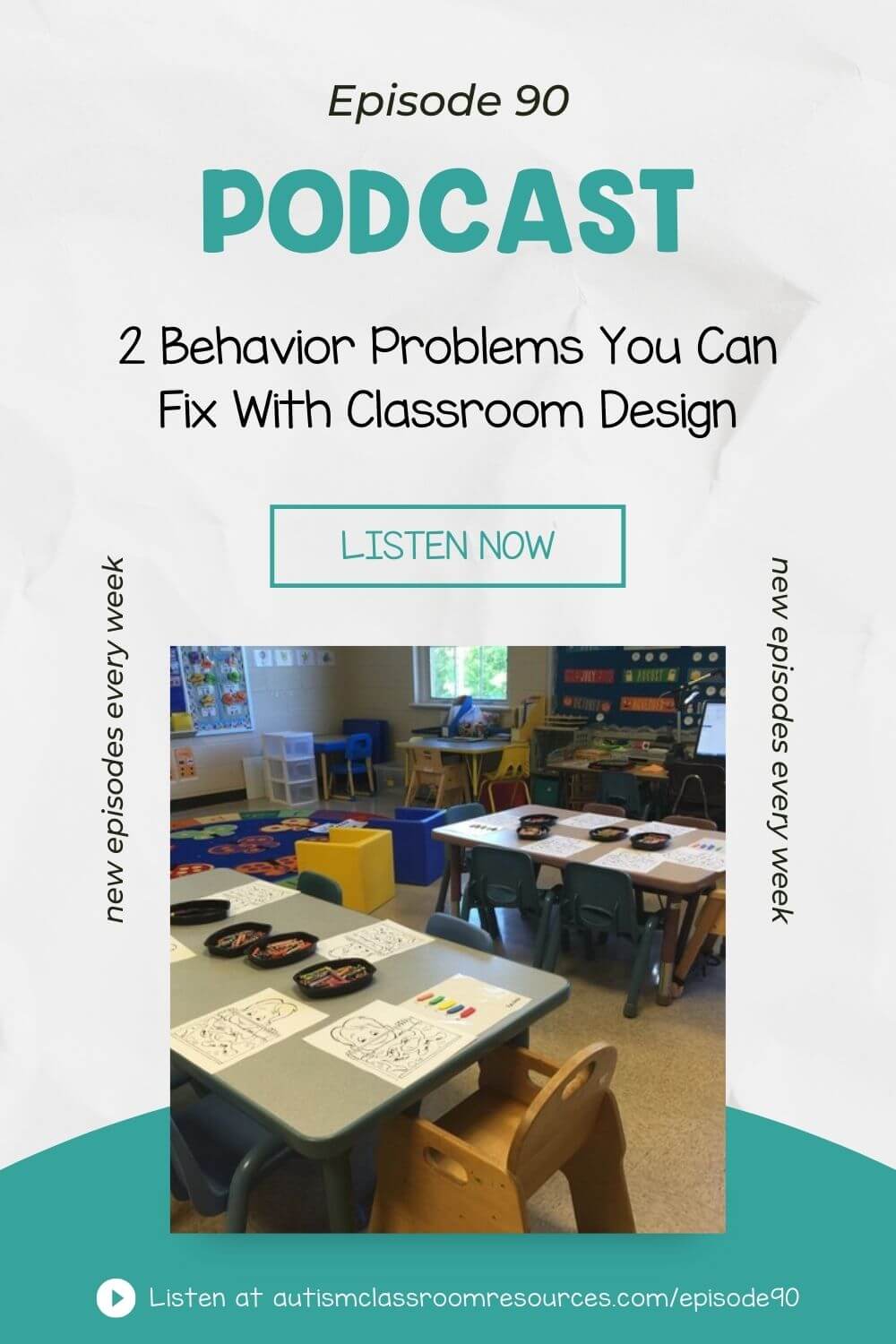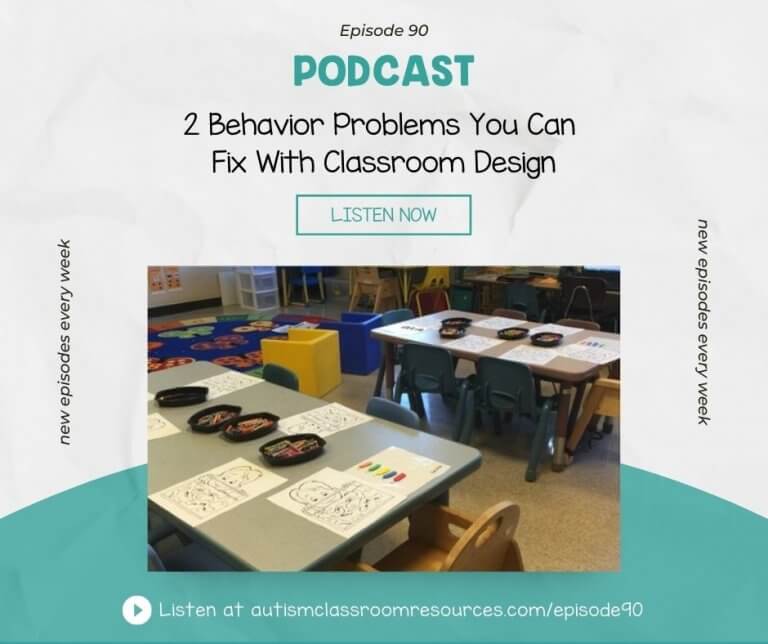Welcome to the Autism Classroom Resources Podcast, the podcast for special educators who are looking for personal and professional development.
Christine Reeve: I’m your host, Dr. Christine Reeve. For more than 20 years, I’ve worn lots of hats in special education but my real love is helping special educators like you. This podcast will give you tips and ways to implement research-based practices in a practical way in your classroom to make your job easier and more effective.
Welcome back to the Autism Classroom Resources Podcast. I’m Christine Reeve and I’m your host. It is so wonderful that you are joining me on this journey through classroom setup. We are almost at the end. We are in the troubleshooting phase, which goes on for the first few weeks of school or whenever you’re starting your classroom. Last week in Episode 89, I talked about how we go through this phase. There was a freebie there to help organize your troubleshooting for what was working and what was not. If you want to grab that, head over to autismclassroomresources.com/episode89.
The next few episodes are going to be about how you make decisions on those things that are not working and how do you know what to change. I’m going to make these really short, snack-size episodes because everybody is pretty much back in school and nobody really has time for any lengthy listening. Today, I’m going to talk about warning signs that mean that you need to fix the physical environment of your classroom. If you’re seeing these things happen in your classroom, I’m going to share a solution that will help for those. Let’s get started.
If you’ve been making your list through the day and after school on what’s working and what’s not working, then that’s where you’re getting your issues of what to address. The first one is if your students are running in the classroom, if you find that they’re running around or running through your classroom, that’s a really big sign that you have too much extra space in some part of your classroom. It may be that you have a large open space in the middle of your room, it could be that you’ve created a track of sorts with your furniture that your students are running around. That often happens when we have large kiddie tables or horseshoe tables, particularly if we set them in the center of the room. The center of the room is always really hard to figure out what to do with in our classrooms because we have a tendency to put our centers on the wall because then we already have a backdrop. But that leaves the center of our room pretty open.
The solution is, not surprisingly, to move the furniture. Well, duh! I think I can be a little bit more helpful than that. Consider moving the furniture so that it creates a flow of traffic for the students’ transitions, which I talked about when I talked about physical design. But we also want to block them from running in a clear path, which I know is easier said than done. But sometimes one of the things that you can do is you could open that path for transitions and close it for when it’s not a transition time. You could do that by having a piece of furniture that’s on wheels so you could open and close it, or move it and move it back, or just move a divider that you can move and move back when it’s not a time for transition.
Another thing you can do is if they’re running around a large table, consider moving the table, rearranging your space so that the ends of that horseshoe table, the flat ends, are closer to the wall so that it’s more difficult for them to run around it. If there’s a big open space in the middle of your classroom, think about rearranging your rooms so that all of your activities are not taking place on the wall or around the periphery of the room. Think about establishing some area that is taking place using furniture to structure it in the center of the room.
Some examples might be I had a teacher that had some old library carrels that she got from their library that she created independent work centers in the middle of the classroom, which I don’t think I’ve ever done in a different way and it worked really well. Another use in a preschool, we use the wooden kitchen furniture to put the pretend play area in the center of the room. Think about how that center space can be used really functionally.
The second problem is if you have students who are leaving the area or leaving the table of an activity. The solution is to look at your setup and figure out a way to add more structure to that area to clearly delineate the boundaries. Think about adding low shelves or dividers behind the area of the students that are getting up and leaving. If your table is set up so that the students are facing the wall and your back is to the wall across from them, think about flipping the table. Consider having the students sit with their backs to the wall and the table in front of them. Now that means you’ll be sitting with your back to the room so make sure you’ve got somebody else who can supervise or move to the side so that you can still see the room. But this makes it clear to the students where they need to stay.
Those are a couple common issues that I’ve frequently dealt with in troubleshooting the design of the classroom. I would love to know what issues you have had, so hop over to our free Facebook group and share them there at specialeducatorsconnection.com. If you’re looking for more individualized help and support in setting up and working with students with disabilities, come try seven days free of the Special Educator Academy. We’re a training and support site that has tons of resources for teachers just like you. You can grab a transcript and links for this post of physical space with some of the issues I’ve described at autismclassroomresources.com/episode90. Thanks so much for listening. I hope you’ll come back next week for another snack-size episode of warning signs that tell you you need to change your physical environment. Until then, I’ll be here dreaming of a classroom with enough furniture to do everything I need it to do.






